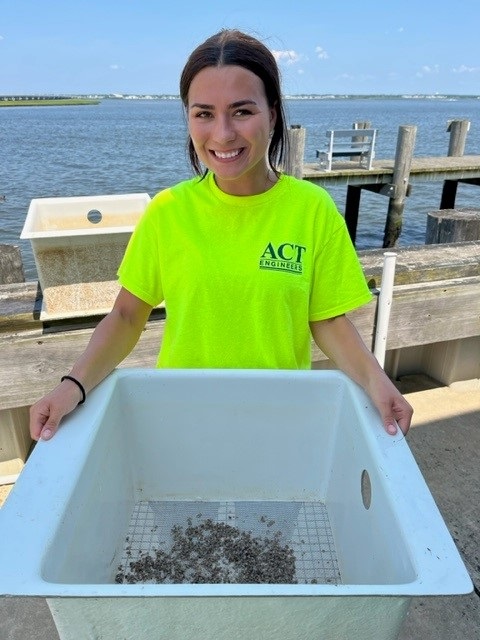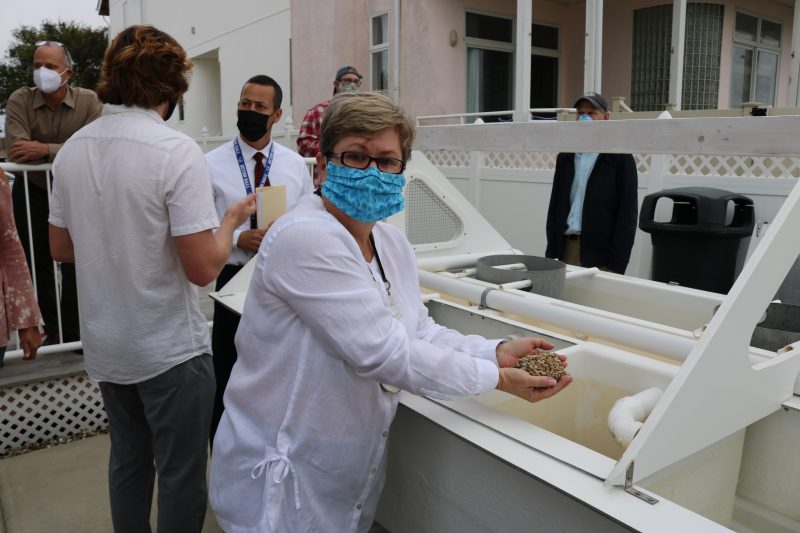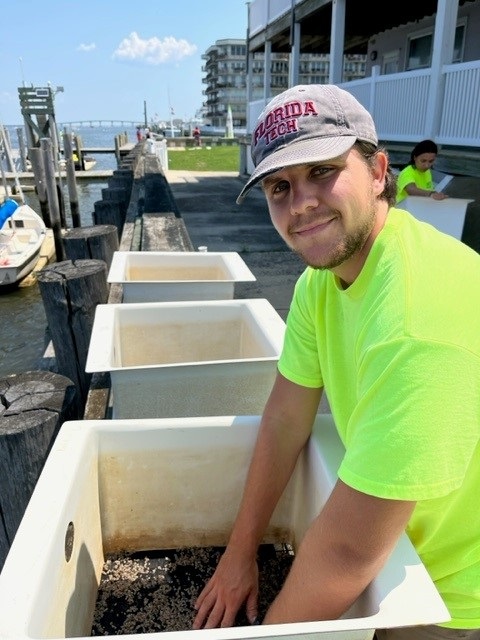
By MADDY VITALE
Some babies arrived at the Bayside Center in Ocean City on Monday – 50,000 of them, in fact. Baby oysters were delivered to the shellfish nursery or “upweller” at the facility.
At the end of the season, the oysters will be placed in Great Egg Harbor Bay to help clean the water, explained ACT Engineers Educational Coordinator Tricia Rosina.
Rosina said that ACT Engineers, an engineering and environmental consultant for Ocean City, is pleased to work with the city and the state Department of Environmental Protection to raise the baby oysters to be released into the bay because of all of the environmental benefits.
“An adult oyster processes approximately 50 gallons of water a day,” Rosina said. “These baby oysters will contribute to the overall ecological health of the bay by processing about 2,500,000 gallons of water a day once they are fully grown.”
She noted that ACT isn’t sure when the oysters will be released, but over the last few seasons it was sometime in late fall. The state DEP releases the oysters.
Both oysters and clams have been utilized in such a way at the Bayside Center.
One ribbed mussel can filter 15 gallons of water per day, one oyster can filter 50 gallons per day and one clam can filter 24 gallons, Junetta Dix, director of environmental services for ACT Engineers, said in 2020 when the upweller was installed at Bayside Center.

Rosina emphasized the importance of the upweller to the environment as well as acting as an educational platform for the public.
“The upweller is located at the Bayside Center along the bulkhead where there are educational signs so that visitors to Ocean City can learn about the process,” she explained.
The original project was a partnership with New Jersey Corporate Wetlands Restoration Partnership, Ocean City, Ocean City High School, Rutgers Aquaculture Innovation Center and the state DEP.
“This is the fourth season that ACT Engineers has coordinated the work with the shellfish on the city’s behalf,” Rosina said. “ACT staff, along with volunteers, clean the upweller weekly and measure the oysters’ growth.”
In October of 2020, local and state officials and representatives from ACT Engineers celebrated the opening of the shellfish incubator at Bayside Center, 520 Bay Ave.
The upweller project was funded by a $25,000 grant from the New Jersey Corporate Wetlands Restoration Partnership. The restoration partnership is a collaborative group of private corporations, government, non-government agencies and the academic world to preserve and protect natural habitats throughout New Jersey.
The upweller consists of a tank system that will pump in bay water to “feed” oysters their diet of naturally occurring microscopic organisms. Once they are big enough, they will be removed from the upweller and placed in the bay to live in their natural environment and help keep the water clean.
In addition to helping keep the bay waters clean, the oysters, like clams, are also used to create “habitat castles” that act as a barrier to protect Ocean City from flooding and destructive waves crashing ashore during coastal storms.
Ocean City has been involved in using shellfish to benefit the environment for several years. One of the most notable projects the city has undertaken is the creation of a 1,700-foot “living shoreline” consisting of shellfish colonies on a neighboring bay islet known as Shooting Island.
Shellfish habitats have helped to stabilize the 150-acre Shooting Island’s eroding shoreline and also serve as a storm barrier for Ocean City.







